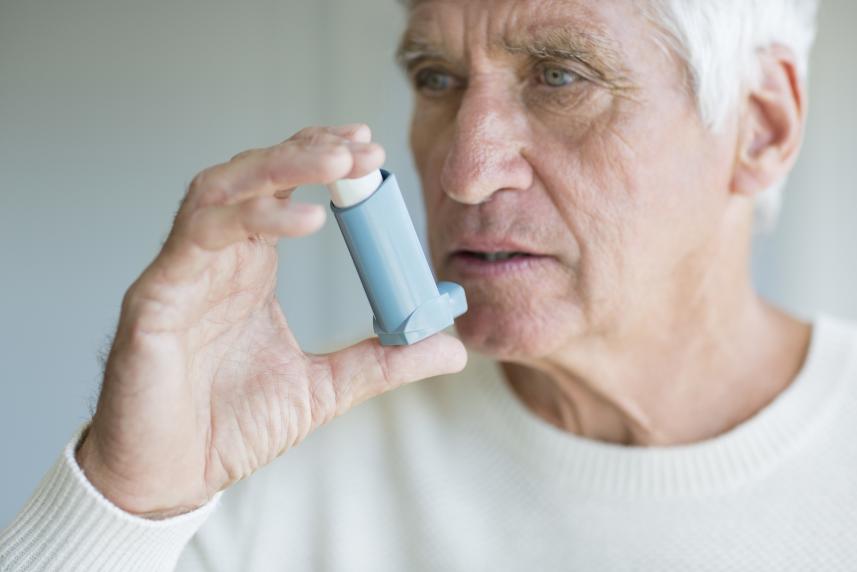The simple way to get the most out of your inhaler
A clogged and dirty inhaler can make the medicine less effective — even if your technique is on point. Here’s a step-by-step guide to keeping your inhaler squeaky clean.

It’s no bigger than the palm of your hand and it slips right into your pocket or purse. And if you’ve ever had an asthma attack, it’s the first thing you reach for: your inhaler.
For folks who have asthma or other breathing conditions, such as emphysema or chronic obstructive pulmonary disease (COPD), inhalers can make all the difference. That’s because unlike medications you take by mouth, an inhaler gives you a premeasured dose of medicine directly into your lungs. It lowers inflammation in your airways, treats wheezing, and relieves shortness of breath — all with fewer unwanted side effects than oral medications.
For your inhaler to work, however, it’s critical that you keep it clean. If it contains dirt, bits of food, or is clogged up with medicine, that can obstruct the opening, which can keep the inhaler from spraying properly. Plus, a dirty inhaler can lead to a buildup of bacteria, mold, and debris, which can irritate your airways or even cause a serious respiratory infection.
Cleaning an inhaler based on the type you have
Some inhalers contain long-acting once-or-twice-a-day medicine, while others are “rescue inhalers” that can help you out of a jam when you have a sudden attack and are struggling to breathe. While your doctor will prescribe the inhaler that’s right for you, your job once it’s in your hands is to follow the instructions carefully and use your inhaler correctly. Here’s a look at the main types of inhalers, plus cleaning tips for each.
Metered-dose inhalers (MDIs) like Proventil have a plastic casing that holds a pressurized canister containing both medicine and a propellant. The propellant forces the medication into your lungs through a mouthpiece. Your doctor may also ask you to use a spacer — a plastic tube placed between the MDI and your mouth. That can help more of the medicine get into your airways.
Cleaning tips:
- Every few days, take the canister out of the plastic casing and remove the cap that covers the mouthpiece.
- Using warm water and a natural detergent with no artificial color, bleach, or ammonia, thoroughly wash the plastic casing and the cap.
- Dry the casing inside and out, then put the canister back into the casing and perform a test dose.
- Give your spacer a frequent bath too: Wash it in warm, soapy water, then dry it with a soft cloth. (Some spacers may be dishwasher safe, but be sure to check the package insert first.)
Dry-powder inhalers (DPIs) like Diskus are plastic disks that release a mist of dry powder when you close your lips around the mouthpiece and take a deep breath. They can be easier to use than MDIs.
Cleaning tips:
- Wipe the mouthpiece with a clean, dry cloth after each use.
- Don’t use water. It may cause the powder inside the disk to clump, preventing the medicine from getting into your airways.
Slow-mist inhalers like Spiriva. As with MDIs, slow-mist inhalers have a canister of medicine tucked inside a plastic casing. When you place the mouthpiece against your lips, it produces a fine mist that’s propelled into your lungs more slowly than MDIs. The upside: Slow-mist inhalers release less aerosol into your mouth.
Cleaning tips:
- Every day or two, clean the mouthpiece, any metal trim, and the plastic casing with a damp cloth or tissue.
- Wipe everything with a clean, dry cloth.


